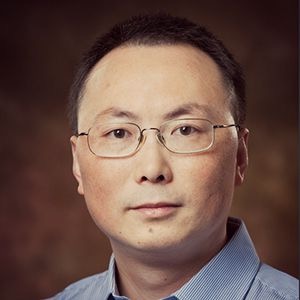报告题目:Industrial Level Full Neuron Morphology Screening of Whole Brains
报 告 人:Hanchuan Peng (SEU-ALLEN & Allen Institute for Brain Science)
主 持 人:赵世杰 助理研究员
报告时间:2019年7月6日(周六)上午9:30
报告地点:自动化学院341会议室
报告简介:Despite substantial advancement in the automatic tracing of brain cells' 3D morphology in recent years, it is challenging to apply existing algorithms to very large image datasets containing billions or more voxels, especially for applications such as morphometry of single neurons at the whole brain scale. We have developed a new platform combining several newly developed technologies including Vaa3D (Nature Biotechnology 2010; Nature Protocols, 2014), TeraFly (Nature Methods, 2016), UltraTracer (Nature Methods, 2017), and TeraVR, to attempt this challenge. Particularly, we have used TeraFly to invoke Vaa3D to quickly visualize the whole mouse brain image volume and manage the thousands of billions of voxels in each of the brain volume. We then used UltraTracer to wrap several efficient base tracers to trace such massive data volumes. Finally, we combined virtual reality and machine learning into a tool called TeraVR for efficient proofreading and editing of such reconstructed neuron morphology. We are further improving the integration of these tools for more scalable and accurate single neuron morphometry.
报告人简历:
 Hanchuan Peng (Director – SEU-ALLEN Joint Center; Affiliate/Adjunct Professor, University of Washington (USA), University of Georgia (USA), Southeast University (China); Fellow, American Institute for Medical and Biological Engineering) develops revolutionary technologies to generate, manage, visualize, analyze, and understand massive-scale structure and function data related to brains. Peng also led the Big Image Mining team at Janelia, HHMI (2006-2012). Peng is a highly cited inventor of a number of new algorithms and software/hardware systems, including Vaa3D - a widely adopted high-performance platform for very large multi-dimensional images (Nature Biotechnology 2010; Nature Protocols, 2014; Nature Communications, 2014, 2019; Nature Methods, 2016, 2017), BrainAligner (Nature Methods, 2011), SmartScope (Nature Communications, 2014; Scientific Reports, 2017), mRMR (IEEE-TPAMI, 2005; a top-10 most cited paper in TPAMI since 2005), etc. He built/co-worked the first digital maps for several widely used model systems at single cell/neurite resolution (C. elegans - Nature Methods, 2009; Cell, 2009; fruitfly - Nature Methods, 2011; mouse – Nature 2014; Nature Neuroscience 2019), and led the “BigNeuron” initiative (http://bigneuron.org; Neuron, 2015). Peng was inducted into AIMBE (2019), a co-recipient of USA National Academy of Sciences’ Cozzarelli Prize (2013), DIADEM award (2010), SfN’2018 Hot Topic (2018), etc. His work has been featured in Nature, Science, NPR, NBC, etc. Peng founded Bioimage Informatics conferences (http://bioimageinformatics.org), helped iconize Bioimage Informatics as a new field in major bioinformatics journals including Bioinformatics, BMC Bioinformatics, Nature Methods, Nature Biotechnology, etc. He currently serves as the co-Editor-in-Chief of the journal Brain Informatics (2016-) and associate editors of a number of journals; he just retired from the Section Chief Editor of BMC Bioinformatics (2011-2018) overseeing the section of imaging, bioimage analysis, and data visualization.
Hanchuan Peng (Director – SEU-ALLEN Joint Center; Affiliate/Adjunct Professor, University of Washington (USA), University of Georgia (USA), Southeast University (China); Fellow, American Institute for Medical and Biological Engineering) develops revolutionary technologies to generate, manage, visualize, analyze, and understand massive-scale structure and function data related to brains. Peng also led the Big Image Mining team at Janelia, HHMI (2006-2012). Peng is a highly cited inventor of a number of new algorithms and software/hardware systems, including Vaa3D - a widely adopted high-performance platform for very large multi-dimensional images (Nature Biotechnology 2010; Nature Protocols, 2014; Nature Communications, 2014, 2019; Nature Methods, 2016, 2017), BrainAligner (Nature Methods, 2011), SmartScope (Nature Communications, 2014; Scientific Reports, 2017), mRMR (IEEE-TPAMI, 2005; a top-10 most cited paper in TPAMI since 2005), etc. He built/co-worked the first digital maps for several widely used model systems at single cell/neurite resolution (C. elegans - Nature Methods, 2009; Cell, 2009; fruitfly - Nature Methods, 2011; mouse – Nature 2014; Nature Neuroscience 2019), and led the “BigNeuron” initiative (http://bigneuron.org; Neuron, 2015). Peng was inducted into AIMBE (2019), a co-recipient of USA National Academy of Sciences’ Cozzarelli Prize (2013), DIADEM award (2010), SfN’2018 Hot Topic (2018), etc. His work has been featured in Nature, Science, NPR, NBC, etc. Peng founded Bioimage Informatics conferences (http://bioimageinformatics.org), helped iconize Bioimage Informatics as a new field in major bioinformatics journals including Bioinformatics, BMC Bioinformatics, Nature Methods, Nature Biotechnology, etc. He currently serves as the co-Editor-in-Chief of the journal Brain Informatics (2016-) and associate editors of a number of journals; he just retired from the Section Chief Editor of BMC Bioinformatics (2011-2018) overseeing the section of imaging, bioimage analysis, and data visualization.



